Tom's Hardware Verdict
Antec's top-of-the-line Signature Platinum 1300W delivers high performance and great build quality., along with plenty of juice.
Pros
- +
Powerful
- +
Full power at 47 degrees Celsius
- +
Good performance
- +
Excellent transient response at +12V
- +
Efficient
- +
High build quality
- +
OC Link feature for even more power
- +
Fully modular
Cons
- -
Noisy with higher than 600W loads
- -
Longer than 20ms rise time at 5VSB
- -
18AWG gauges on the EPS and PCIe connectors
- -
The ATX and EPS cables should be longer
- -
Not compatible with the newest ATX spec (v2.52)
- -
Small distance between 4-pin Molex connectors
Why you can trust Tom's Hardware
There are not many choices if you are after a high-capacity power supply, since the mining era is long gone, thankfully, so the need for powerful PSUs is diminished. Still, there are cases where more than 1000W of power is required (e.g., for video or other special purposes workstations), and in this category, Antec has a strong presence now with the Signature 1300 Platinum, which is also certified by Cybenetics. Notable opponents of this unit are the mighty and super-expensive Corsair AX1600i and EVGA SuperNOVA 1600 T2, which dominate the above 1000W category in our best power supplies article. In the same wattage, the Cooler Master V1300 Platinum is also an excellent choice, featuring a notably quieter operation compared to Antec's offering.
We have already evaluated the Antec Signature Titanium 1000, which scored very high in our tests and earned an editor's choice award. The strongest member of the Signature line is based on the same platform with the model above, offering notably higher capacity, which doesn't allow for 80 PLUS Titanium and Cybenetics ETA-A+ efficiency ratings, though. Still, the Signature 1300 achieves Platinum and ETA-A ratings, which are pretty tough to acquire, especially by PSUs with more than 1.2kW max power.

Product Photos






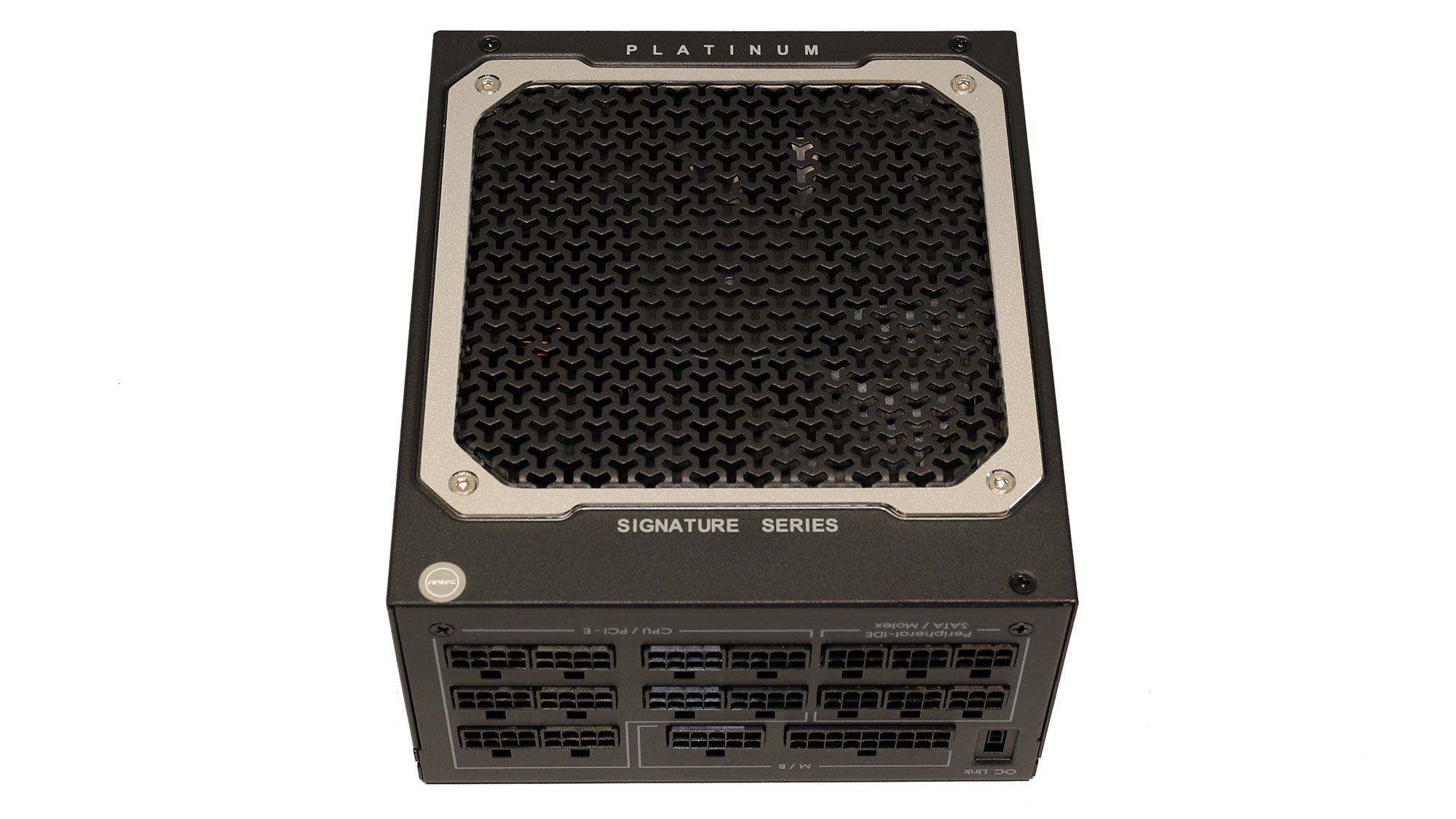

The dimensions of the PSU are small, given the high capacity so that you won't have issues with any standard ATX chassis. A few years ago, it would be impossible to find such a strong power supply with less than 200mm depth, but thanks to the PSU downsizing trend, this is possible nowadays. The essential rest specifications include the fluid dynamic bearing fan, which measures 135mm across, and the ten-year warranty. Finally, this PSU also features the OC Link technology that we have seen in the Signature 1000 Titanium, allowing you to connect two PSUs which will work in tandem to power systems demanding more than 2.5kW of power! We don't believe that any user will need so much power; still, it is nice to have this option.
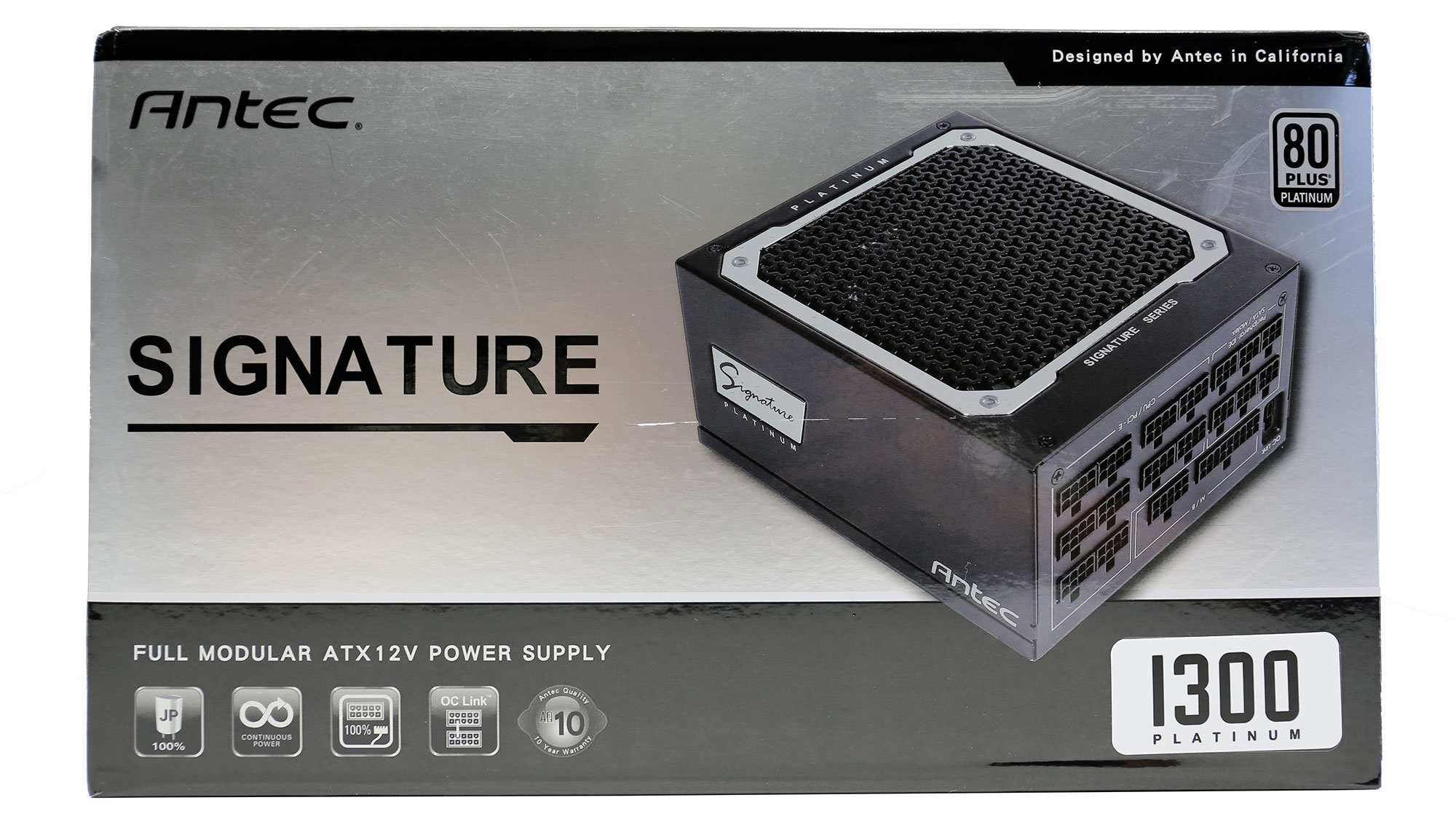
Product Photos





Specifications
|
Manufacturer (OEM) |
Seasonic |
|
Max. DC Output |
1300W |
|
Efficiency |
80 PLUS Platinum, ETA-A (88-91%) |
|
Noise |
- |
|
Modular |
✓ (Fully) |
|
Intel C6/C7 Power State Support |
✓ |
|
Operating Temperature (Continuous Full Load) |
0 - 50°C |
|
Over Voltage Protection |
✓ |
|
Under Voltage Protection |
✓ |
|
Over Power Protection |
✓ |
|
Over Current (+12V) Protection |
✓ |
|
Over Temperature Protection |
✓ |
|
Short Circuit Protection |
✓ |
|
Surge Protection |
✓ |
|
Inrush Current Protection |
✓ |
|
Fan Failure Protection |
✗ |
|
No Load Operation |
✓ |
|
Cooling |
135mm Fluid Dynamic Bearing Fan (HA13525H12F-Z) |
|
Semi-Passive Operation |
✓ (selectable) |
|
Dimensions (W x H x D) |
150 x 85 x 170mm |
|
Weight |
2.12 kg (4.67 lb) |
|
Form Factor |
ATX12V v2.4, EPS 2.92 |
|
Warranty |
10 Years |
Power Specifications
| Rail | 3.3V | 5V | 12V | 5VSB | -12V | |
| Max. Power | Amps | 25 | 25 | 108 | 3 | 0.3 |
| Watts | 125 | 1296 | 15 | 3.6 | ||
| Total Max. Power (W) | 1300 |
Cables & Connectors
| Modular Cables | Cable Count | Connector Count (Total) | Gauge | In Cable Capacitors |
|---|---|---|---|---|
| ATX connector 20+4 pin (600mm) | 1 | 1 | 18-22AWG | Yes |
| 4+4 pin EPS12V (650mm) | 2 | 2 | 18AWG | Yes |
| 6+2 pin PCIe (670mm+70mm) | 6 | 12 | 18AWG | Yes |
| SATA (400mm+115mm+115mm+115mm) | 2 | 8 | 18AWG | No |
| SATA (350mm+150mm+150mm+150mm) | 1 | 4 | 18AWG | No |
| 4-pin Molex (450mm+120mm+120mm) | 1 | 3 | 18AWG | No |
| 4-pin Molex (350mm+120mm) | 1 | 2 | 18AWG | No |
| FDD Adapter (105mm) | 1 | 1 | 22AWG | No |
| 4-pin Molex to SATA 3.3V Adapter (150mm+150mm) | 1 | 1 | 18AWG | No |
| OC Link Cable (460mm) | 1 | 1 | 24AWG | No |
| AC Power Cord (1400mm) - C13 coupler | 1 | 1 | 14AWG | - |
It is natural to find so many cables and connectors in such a high capacity power supply. So besides two EPS connectors, you will also get twelve PCIe, allowing you to install up to six high-end graphics cards. The number of peripheral connectors is increased, as well.
It is strange to see 18AWG gauges instead of thicker (16AWG) in a 1300W power supply. This would help in achieving lower voltage drops, and a bit higher efficiency levels, especially at increased loads, but on the other hand, the cables would be less flexible. The presence of in-cable caps is something that will let down several users because cable routing becomes tough. Finally, the ATX and EPS cables should be longer, given that this PSU is destined for huge chassis, but the AWG18 gauges set the limits in their length.

Cable Photos









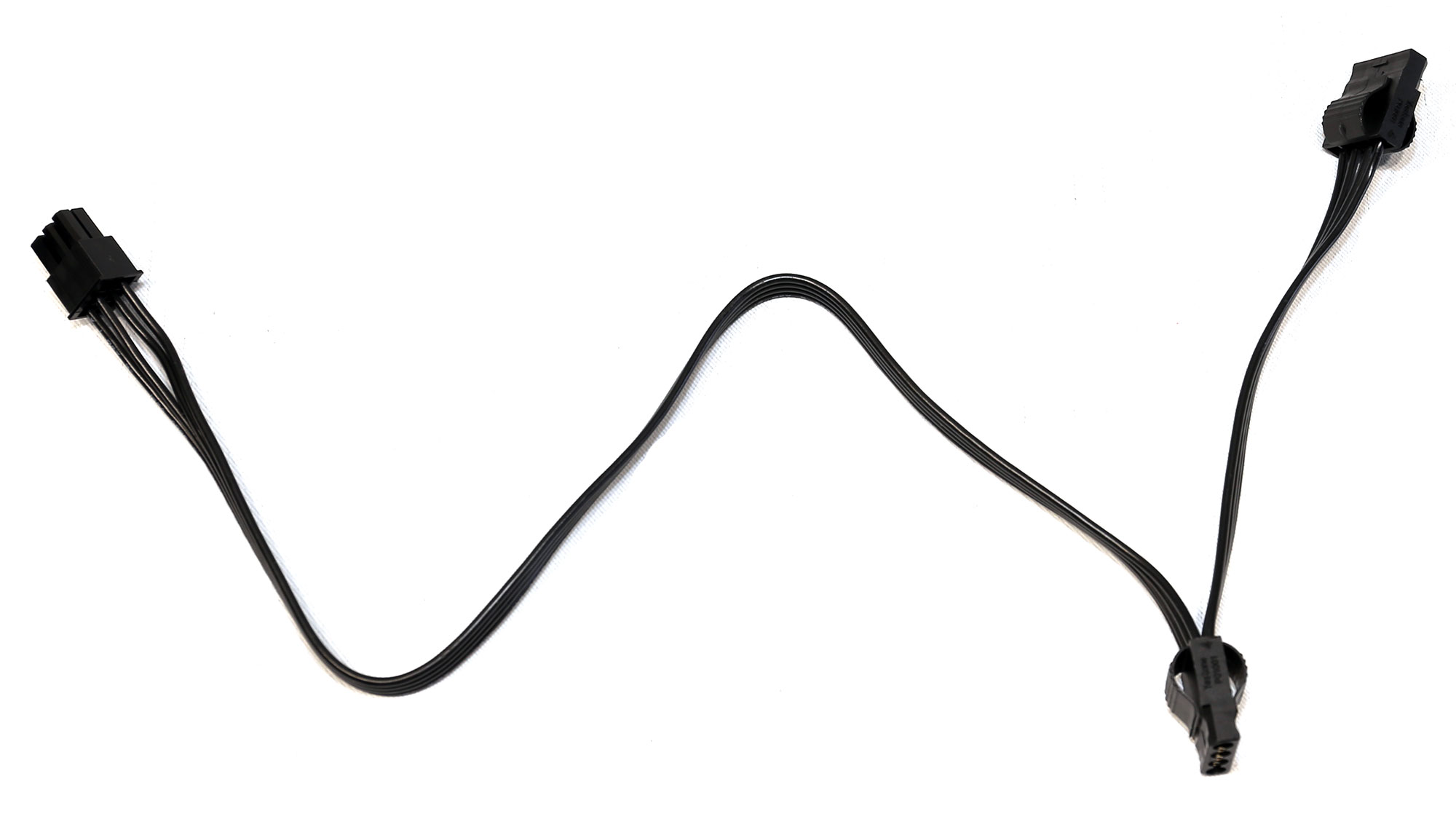





Component Analysis
We strongly encourage you to have a look at our PSUs 101 article, which provides valuable information about PSUs and their operation, allowing you to better understand the components we're about to discuss.
| General Data | - |
| Manufacturer (OEM) | Seasonic |
| PCB Type | Double Sided |
| Primary Side | |
| Transient Filter | 6x Y caps, 3x X caps, 2x CM chokes, 1x MOV, 1x Discharger IC |
| Inrush Protection | NTC Thermistor (MF72 5D-20) & Relay |
| Bridge Rectifier(s) | 2x Vishay LVB2560 (600V, 25A @ 105°C) |
| APFC MOSFETs | 2x Infineon IPP60R099C6 (650V, 24A @ 100°C, Rds(on): 0.099Ohm) |
| APFC Boost Diode | 1x STMicroelectronics STPSC10H065D (650V, 10A @ 135°C) |
| Hold-up Cap(s) | 1x Rubycon (400V, 820uF, 3,000h @ 105°C, MXK) & 1x Rubycon (400V, 470uF, 2,000h @ 105°C, MXH) |
| Main Switchers | 4x Infineon IPP50R199CP (550V, 11A @ 100°C, Rds(on): 0.199Ohm) |
|
IC Driver |
2x Silicon Labs Si8230BD |
| APFC Controller | ON Semiconductor NPC1654 |
| Resonant Controller | Champion CM6901T6X |
| Topology | Primary side: APFC, Full-Bridge & LLC converter Secondary side: Synchronous Rectification & DC-DC converters |
| Secondary Side | - |
| +12V MOSFETs | 8x Nexperia PSMN1R0-40YLD (40V, 198A @ 100°C, Rds(on): 1.93mOhm) |
| 5V & 3.3V | DC-DC Converters: 6x Nexperia PSMN4R0-30YLD (30V, 67V @ 100°C, Rds(on): 6.6mOhm) PWM Controllers: Anpec APW7159 |
| Filtering Capacitors | Electrolytic: 4x Nippon Chemi-Con (105°C, W), 2x Nippon Chemi-Con (4-10,000h @ 105°C, KY), 1x Nippon Chemi-Con (4-10,000h @ 105°C, KYB), 1x Nippon Chemi-Con (5-6,000h @ 105°C, KZH), 1x Nippon Chemi-Con (1-5,000h @ 105°C, KZE), 1x Rubycon (3-6,000h @ 105°C, YXG) Polymer: 19x FPCAP, 14x NIC, 7 United Chemi-Con |
| Supervisor IC | Weltrend WT7527V (OVP, UVP, OCP, SCP, PG) |
| Fan Model | Hong Hua HA13525H12F-Z (135mm, 12V, 0.50A, Fluid Dynamic Bearing Fan) |
| 5VSB | |
| Rectifier | 1x STMicroelectronics STF6N65K3 FET (650V, 3A @ 100°C, 1.3Ohm) |
| Standby PWM Controller | Leadtrend LD7750R |
| -12V | - |
| Buck Converter | Lite-On LSP5523 (3A max output current ) |
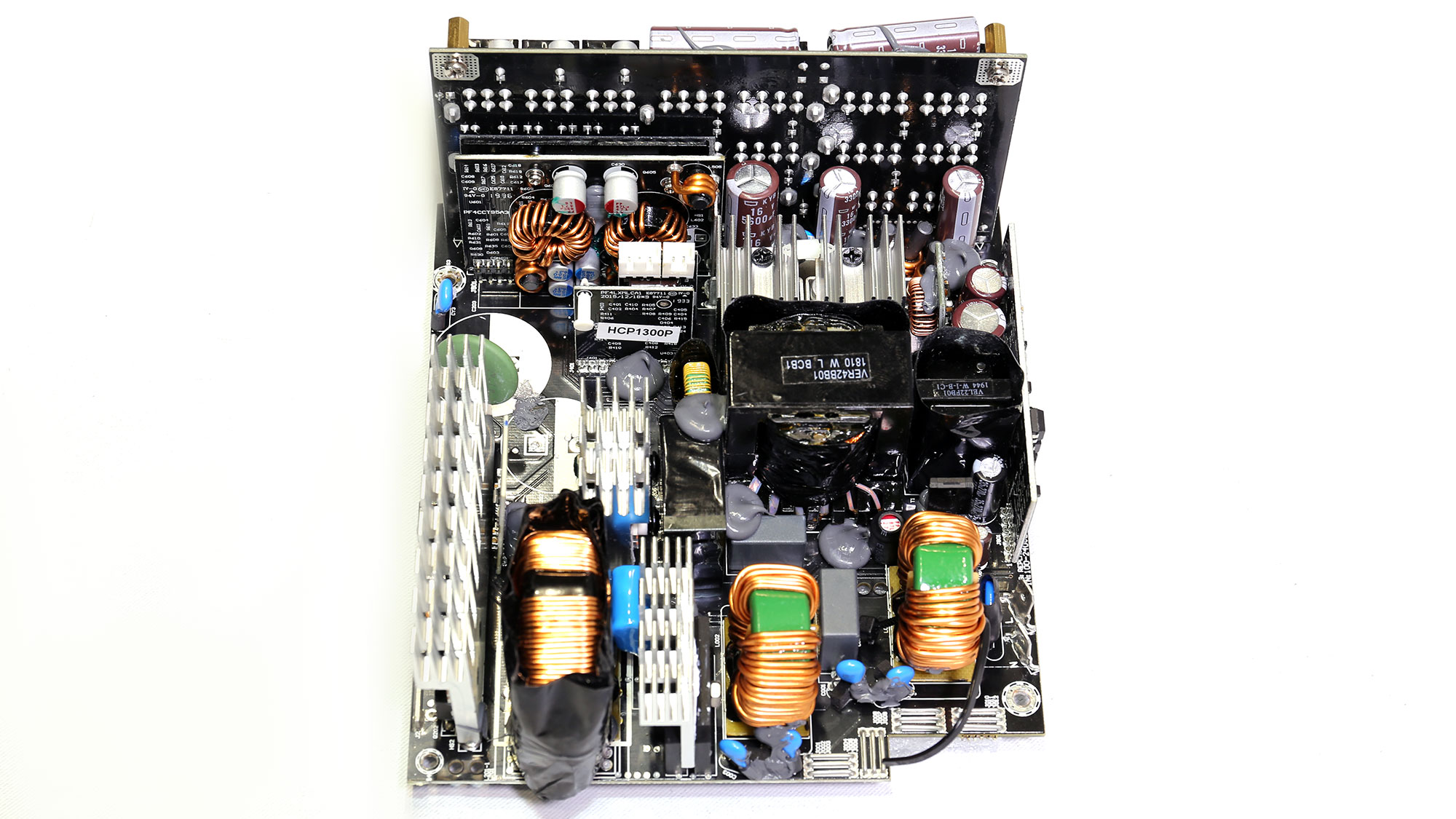
Overall Photos



This Antec unit uses the Seasonic Prime Platinum 1300W platform. The build quality is good, and the small PCB is overpopulated with components since this is a small power factory. The design is clean since no cables are used for power transfer purposes, and the heat sinks are compact, something that looks weird given the max power that this PSU can deliver.
Get Tom's Hardware's best news and in-depth reviews, straight to your inbox.

Transient filter





The transient filter uses all necessary parts to deal with power spikes and incoming/outcoming EMI noise. The NTC thermistor has 5 Ohms (+-20%) max resistance, so it does an excellent job in suppressing the inrush currents that the large bulk caps can produce.

Bridge rectifiers

The pair of bridge rectifiers can handle up to 50A of current. This is overkill, even for a 1.3kW PSU.

APFC converter


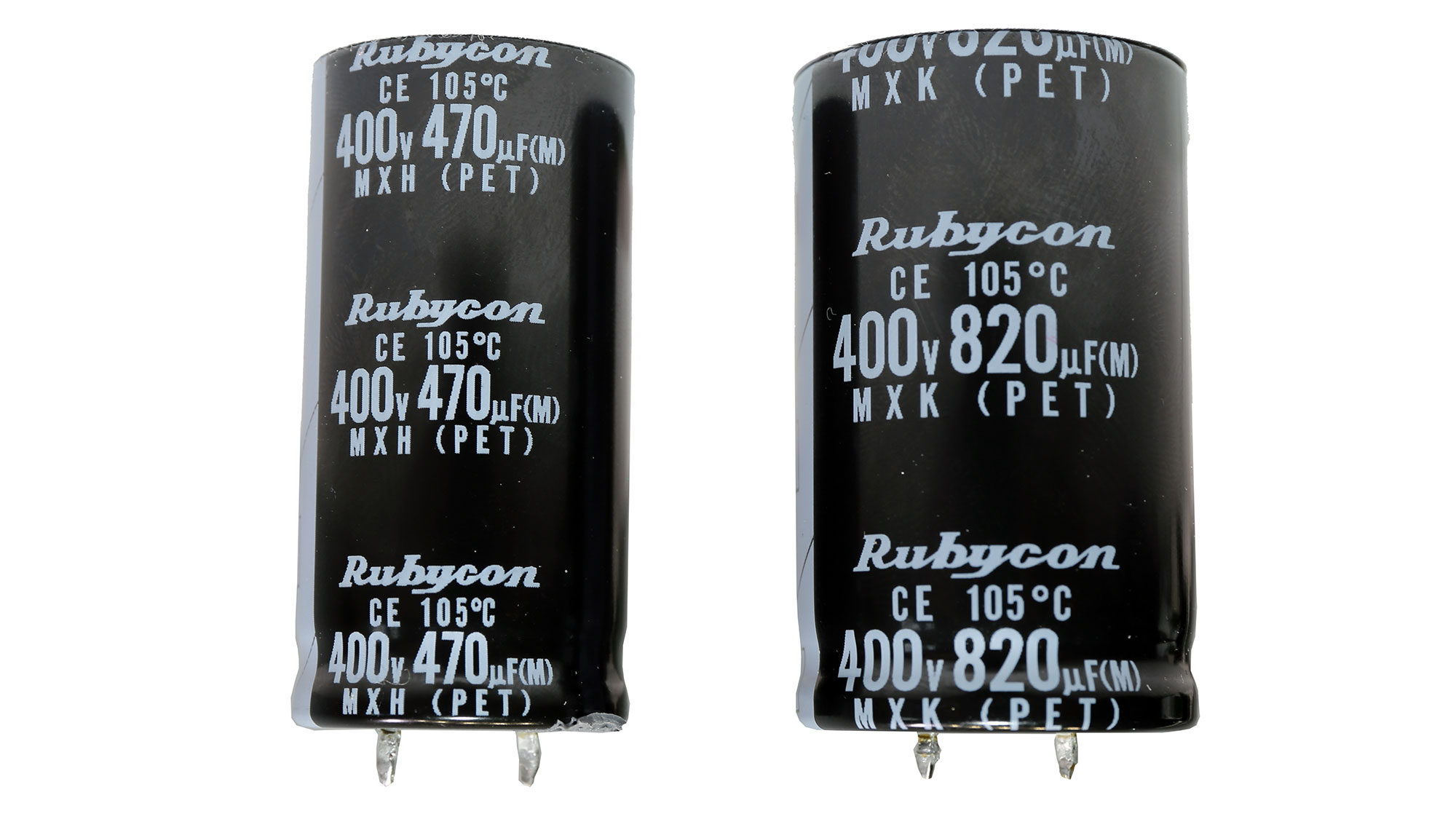
The APFC converter uses two Infineon FETs and a single boost diode (STPSC10H065D). On Semiconductor provides the APFC controller, and its model number is NPC1654. Finally, the hold-up caps are two Rybycons, with 1290uF combined capacity, which is enough to allow for a longer than 17ms hold-up time.

Main FETs and primary transformer
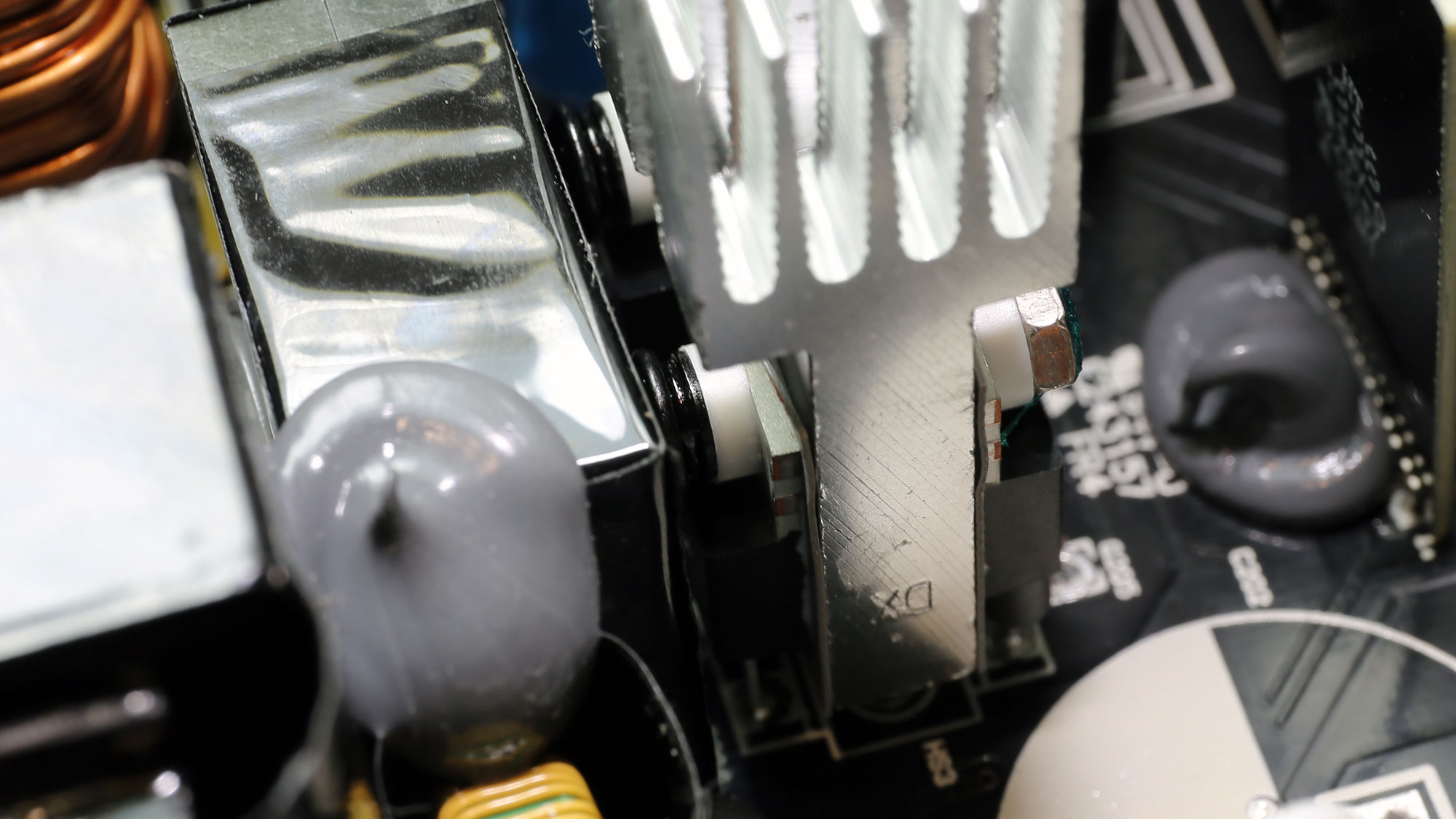


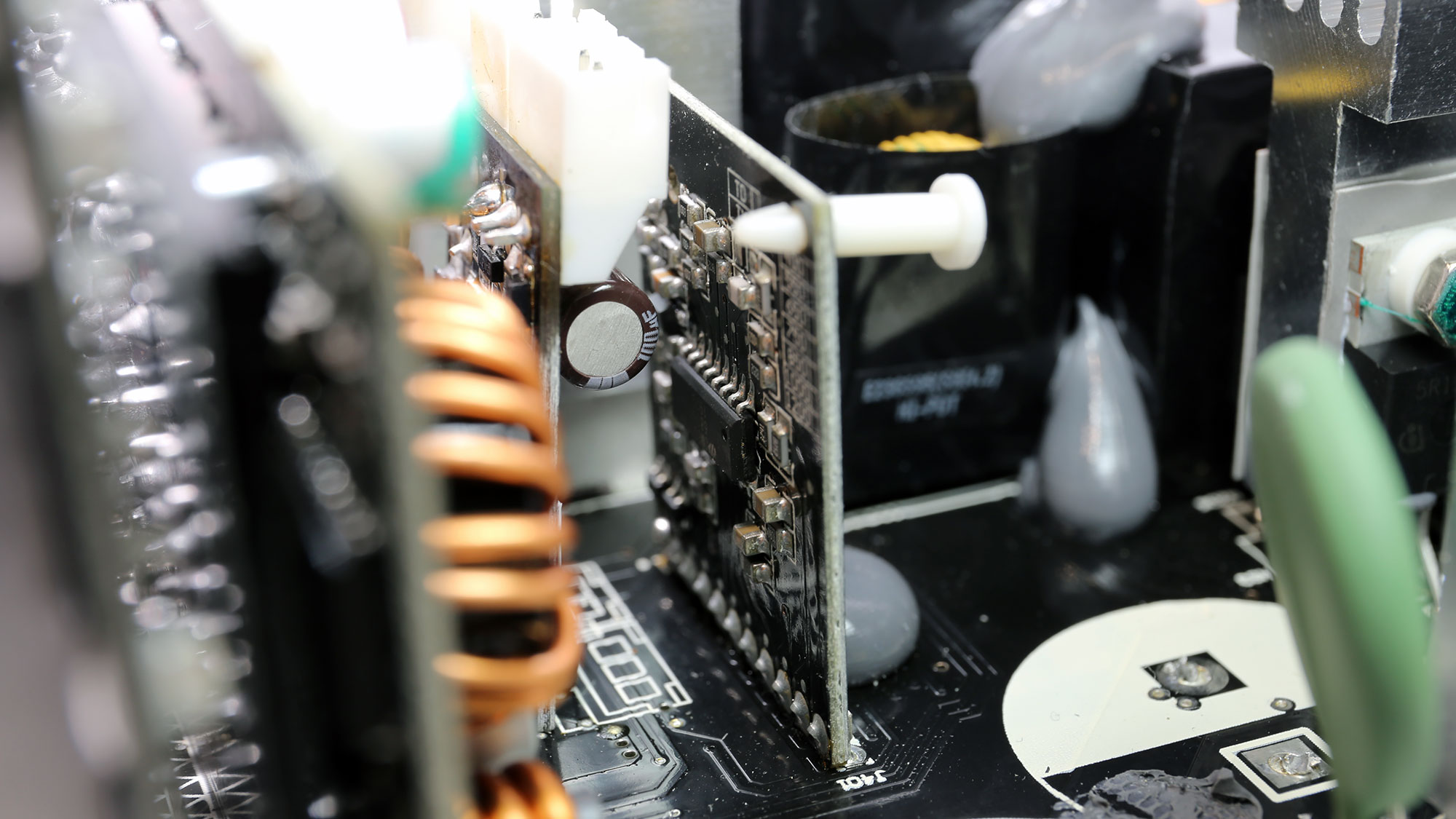

The main switching FETs are four Infineon IPP50R199CP configured in a full-bridge topology. There is also an LLC resonant converter for increased efficiency. The resonant controller is the typical Champion CM6901T6X, which is used by the majority of high-end PSUs nowadays.
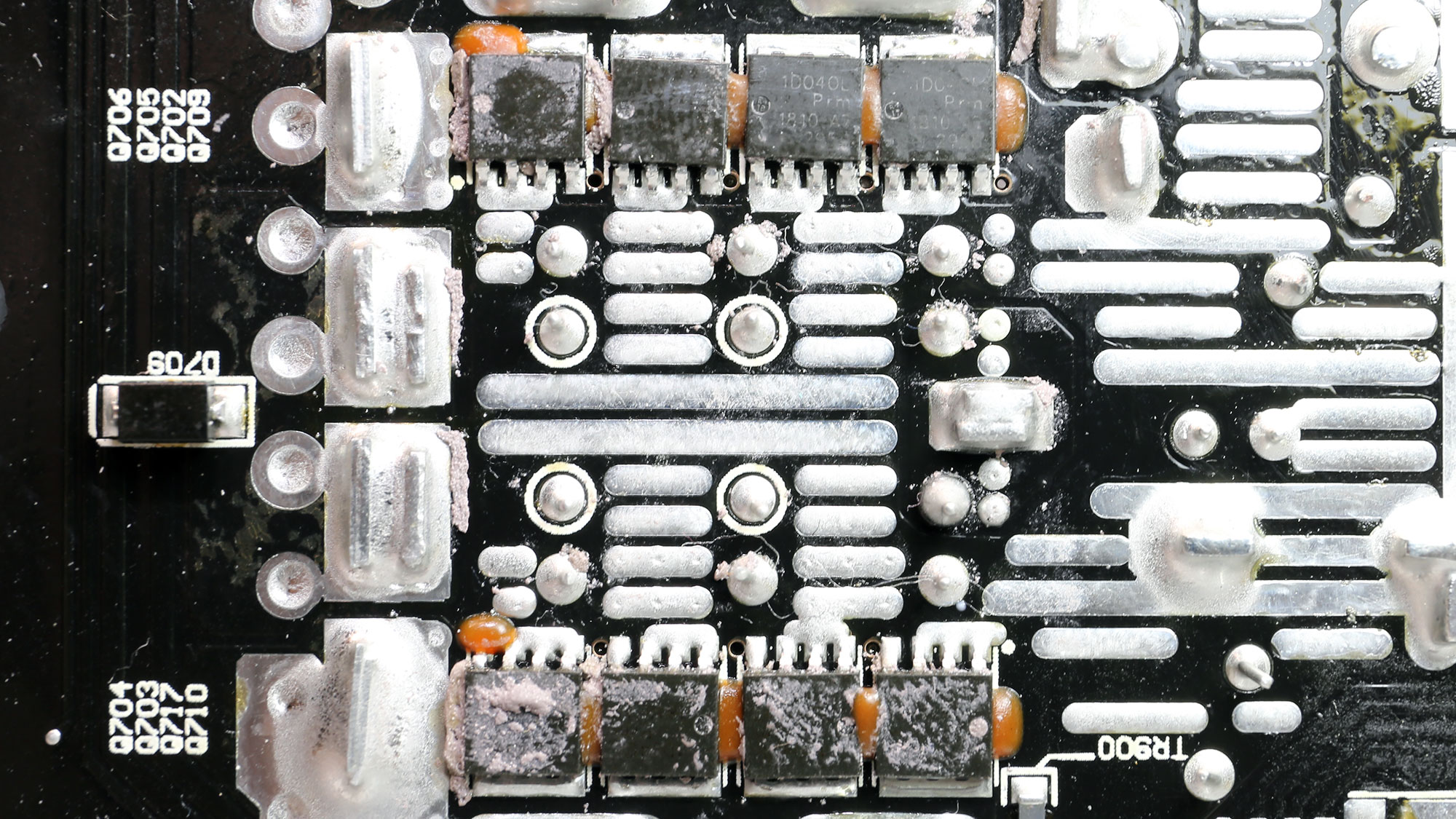
12V FETs and VRMs


Eight FETs, installed on the solder side of the main PCB, handle the +12V rail. A pair of VRMs generate the minor rails.

Filtering caps


There aren't many electrolytic caps; Chemi-Con and Rubycon provide the ones that Seasonic used. The number of polymer caps is vast, and their suppliers are FPCAP, NIC, and Chemi-Con

Modular board front


The modular board uses bus bars, to transfer power to the sockets.

Supervisor IC

The supervisor IC, a Weltrend WT7527V, is installed on this board. On the left side, the small IC is an operational amplifier, and four optocouplers bridge the two separate parts of this PCB.
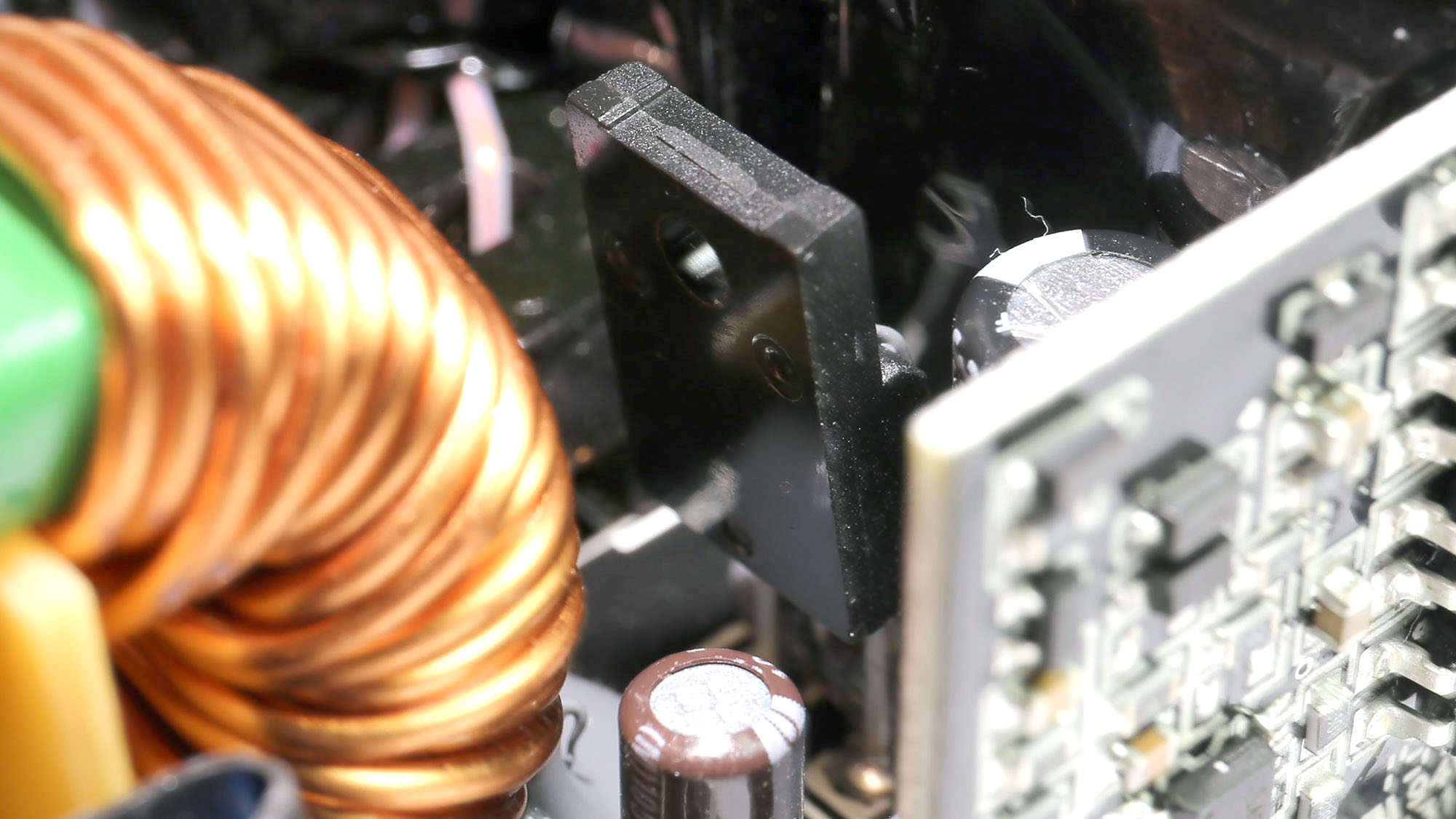
5VSB regulator


The primary rectifier of the 5VSB rail is an STF6N65K3 FET, while Leadtrend provides the PWM controller.

Soldering quality





As expected, in such an expensive PSU, the soldering quality is good.

Cooling fan
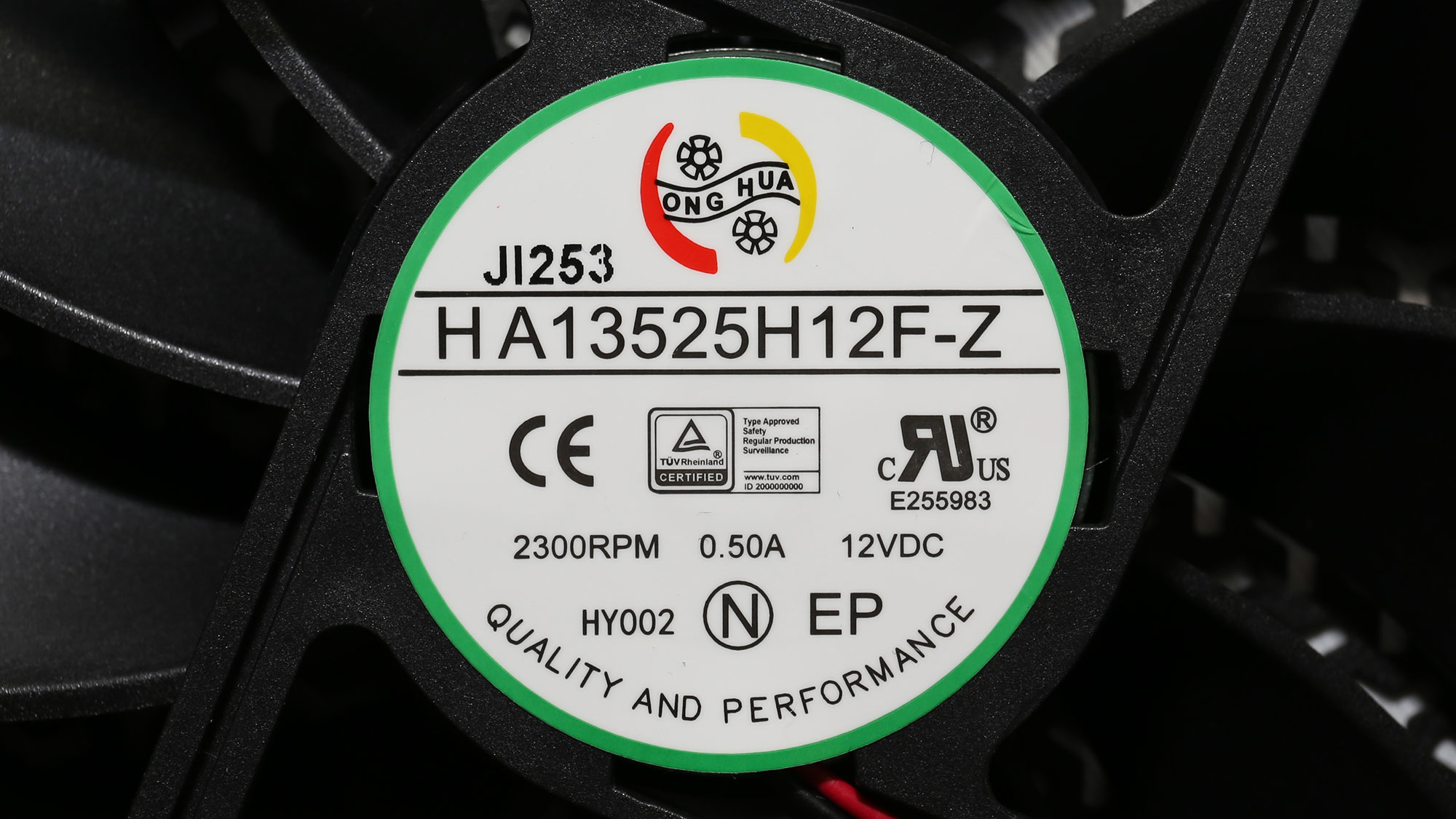
The cooling fan is by Hong Hua, and it uses a fluid dynamic bearing. It measures 135mm across, and it can draw up to 0.5A of current, so it is quite strong.
MORE: Best Power Supplies
MORE: How We Test Power Supplies
MORE: All Power Supply Content
Current page: Specifications and Part Analysis
Next Page Load Regulation, Hold-Up Time, Inrush Current, Efficiency and Noise
Aris Mpitziopoulos is a contributing editor at Tom's Hardware, covering PSUs.